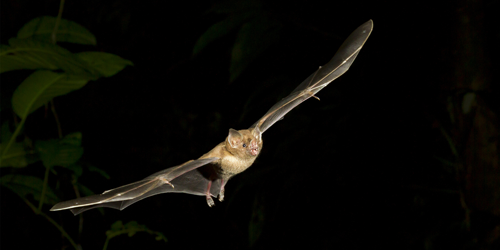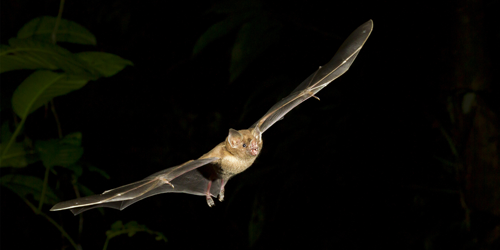Jiggles that Help Bat Biosonar
Bats use ultrasonic signals to navigate in total darkness or track down tiny prey like mosquitoes. To echolocate, they emit ultrasound calls and listen for echoes of those calls as they bounce off objects in the environment. Researchers know that the morphology of a bat’s nose and ears may help it to aim its calls and detect the direction from which the echoes originate, but they don't fully understand what makes bat biosonar so accurate. Now, Rolf Müller of Virginia Tech and colleagues have demonstrated that fast jiggling movements of tissue structures on the nose and in the ears of horseshoe bats dramatically boost their ability to pinpoint the source of incoming signals. The results could guide the design of new bioinspired sensors that may give drones location skills as remarkable as those naturally available to bats.
Using computer models and 3D-printed robots, the team quantitatively analyzed how the directional information that bats derive from echoes of their calls is affected by changes in the shape of their noseleaves—skin and cartilage folds surrounding the bat’s nostrils—and of the outer parts of their ears. Specifically, in horseshoe bats, the noseleaves oscillate between an extended and a contracted conformation and the ears between an upright shape and a bent one. Through numerical simulations and experiments with the robots, the authors compared the number of directions that could be distinguished when these structures were static and when they underwent shape changes. They found an increase in the number of resolvable directions by up to 2–3 orders of magnitude when the noseleaves and ears could deform, compared to when they couldn't.
This research is published in Physical Review Letters.
–Matteo Rini
Matteo Rini is the Deputy Editor of Physics.





